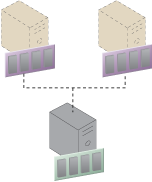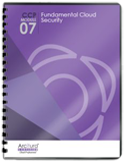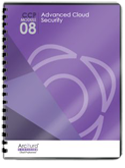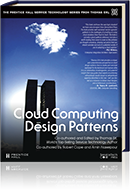Cloud Computing Patterns, Mechanisms > Mechanisms > T - Z > Virtual RAM
Virtual RAM

In a virtualized computing environment, physical memory is partitioned into virtualized physical memory. Virtual memory management techniques are used to allocate additional memory to a virtual machine. Virtual RAM (vRAM) is the amount of RAM that a hypervisor allocates to a virtual server. A hypervisor has to allocate 2 GBs of vRAM to a virtual server that is being created with 2 GBs of RAM.
Note that not all allocated vRAM is physical RAM. The hypervisor may allocate both physical memory and disk space to meet the vRAM requirements, such as 1.5 GBs of physical memory and 500 MBs of RAM. This disk memory is called virtual memory, whether in the context of physical or virtual memory.
Figure 1 shows the physical memory of a compute resource being partitioned into two instances of virtualized physical memory.

Figure 1 – An example of vRAM on two virtual servers.
Related Patterns:
- Elastic Resource Capacity
- Load Balanced Virtual Server Instances
- Memory Over-Committing
- Resource Pooling
- Resource Reservation
- Shared Resources
- Zero Downtime
This mechanism is covered in CCP Module 7: Fundamental Cloud Security and
in Module 8: Advanced Cloud Security.
For more information regarding the Cloud Certified Professional (CCP) curriculum, visit www.arcitura.com/ccp.
The architectural model upon which this design pattern is based is further covered in:
Cloud Computing Design Patterns by Thomas Erl, Robert Cope, Amin Naserpour
(ISBN: 9780133858563, Hardcover, ~ 528 pages)
For more information about this book, visit www.arcitura.com/books.


